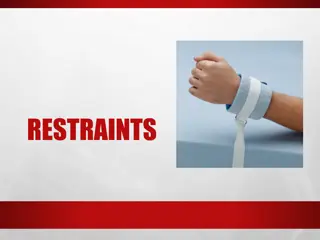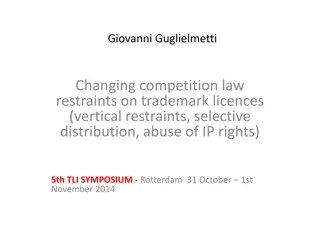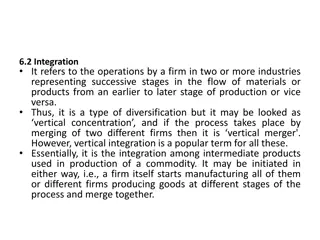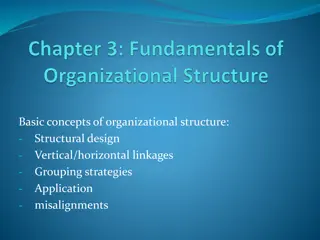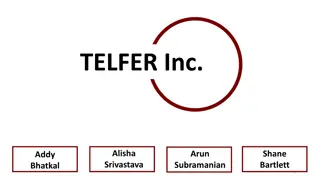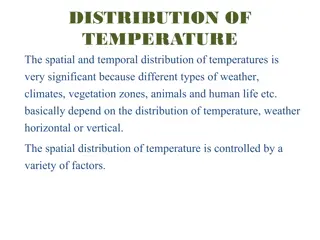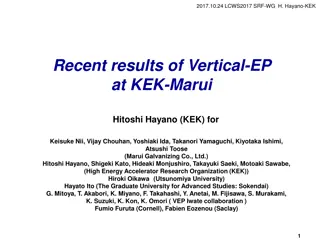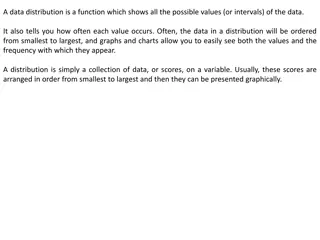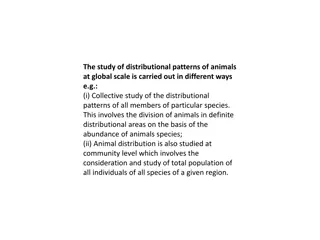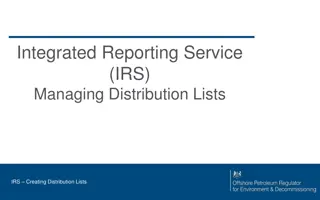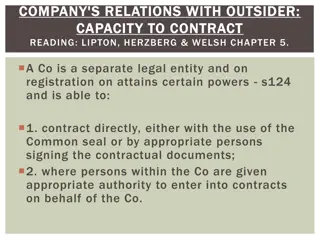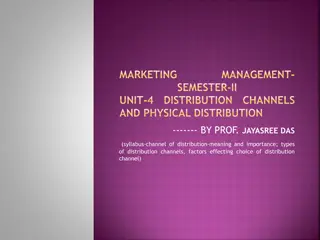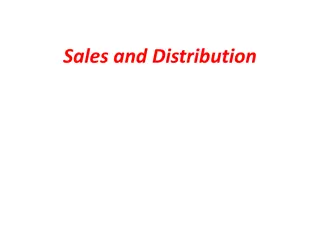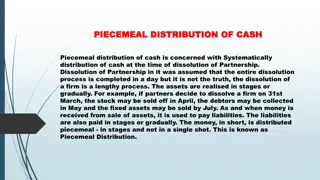Understanding Vertical Restraints in Company A's Distribution Policy
Company A, a manufacturer of electronic equipment, implements a distribution policy that includes vertical restraints on its authorized resellers. These restraints aim to maintain a luxury brand image by prescribing specific sales practices and limitations. The case study explores the implications of these vertical restraints and the competitive landscape they create within the distribution chain.
Download Presentation

Please find below an Image/Link to download the presentation.
The content on the website is provided AS IS for your information and personal use only. It may not be sold, licensed, or shared on other websites without obtaining consent from the author. Download presentation by click this link. If you encounter any issues during the download, it is possible that the publisher has removed the file from their server.
E N D
Presentation Transcript
Vertical Restraints ukasz St pkowski
Case study vertical restraints Company A, a manufacturer of certain articles of electronic equipment that bear a trademark depicting fruit having been chewed on, operates a network of sales representatives. Those sales representatives resell A s equipment in retail stores, acting as authorised resellers. Authorised resellers sell A s equipment in their own capacity. A selects its resellers in accordance to its internal policy aimed at maintaining a luxury brand image. Such a brand image necessitates that resellers rent only spacious business premises to resell A s products in, that such business premises must be staffed during rush hours, only A s products are expected to be prominently displayed and that resellers may not sell A s products wholly online, as customers are supposed to receive a purchasing experience meant to build a loyal consumer base. In addition, resellers are required not to sublet their business premises without A s express prior written consent. Resellers were not required to abstain from competing with one another or to cover only a certain area. Such policy was introduced by Mr Stephan Works, A s general sales executive. Mr Works acted on behalf of A in the matter of the above internal policy, but was not A s employee. Having in mind the above consider if there was a vertical restraint and why/why not. If there were to be a vertical restraint, between whom would it be?
Vertical restraints Restrictions of competition may appear not only horizontally , as e.g. cartels, but also in a vertical manner, where there are two or more undertakings, and each of which operates, for the purposes of the agreement or the concerted practice, at a different level of the production or distribution chain Article 101 TFEU makes no express distinction between horizontal and vertical agreements, concerted practices or decisions of associations of undertakings As such, vertical agreements, concerted practices or decisions of associations of undertakings taken in a vertical relationship may contain vertical restraints of competition However, not every e.g. vertical agreement is a vertical restriction
Vertical restraints Vertical restraints, similarly to horizontal restraints, may either restrict competition by their object or effect There are some views in literature that vertical agreements and practices are less damaging than horizontal restrictions, for the fact that they are not primarily carried out between competitors and also due to the fact that they supposedly help manufacturers and distributors to compete with other market players However, the Court has dismissed such views and held that vertical restraints may be no less damaging ( ) the fact that both cases concern vertical relationships in no way excludes the possibility that the agreement at issue in the main proceedings constitutes a restriction of competition by object . While vertical agreements are, by their nature, often less damaging to competition than horizontal agreements, they can, nevertheless, in some cases, also have a particularly significant restrictive potential (C-32/11 Allianz, 43)
Vertical Restraints There is a Commission Regulation no 330/2010 of 20 April 2010 on the application of Article 101(3) of the Treaty on the Functioning of the European Union to categories of vertical agreements and concerted practices (http://eur-lex.europa.eu/legal- content/EN/TXT/HTML/?uri=CELEX:32010R0330&from=PL) Regulation 330/2010 is meant to provide a safe haven of sorts for manufacturers and distributors that wish to enter into a vertical agreement Provided that its provisions are complied with, vertical agreements falling within its scope are exempted from Article 101 TFEU (hence it is called a general block exemption ) However, Regulation 330/2010 stipulates that some restrictions are harmful enough to warrant exclusion from its exemption, which includes, inter alia, the so-called hardcore restrictions
Vertical Restraints The so-called hardcore restrictions are the most severe forms of vertical restrictions Hard-core restrictions constitute restriction of competition by object and as such it is not necessary to show their effect Regulation no 330/2010 lists such hardcore restrictions under Article 4 However, the list is not exhaustive and other, unlisted restrictions may be as severe as hardcore restrictions under Article 4 In addition, Regulation 330/2010 excludes some of the restrictions from its exemption, without naming them hardcore restrictions (Article 5) The requirement that a restriction has to be appreciable (de minimis) also applies to vertical restraints (C-345/14 SIA Maxima Latvia, 17)
Vertical Restraints and Agency Where there is an agency relationship, that vertical relationship is deemed to fall outside Article 101 TFEU, as the agent is deemed to be not a separate undertaking capable of infringing Article 101 TFEU (in other words, the agent ceases to be an independent economic operator) While agency may arise from express contractual clauses, that relationship is not limited to contracts of agency under any national law and may be factual The agent may not bear, or may bear only to a very limited extent the financial risks resulting from the contracts of sale concluded through him in order to be an agent (T- 418/10 voestalpine, 158)
Vertical Restraints selective distribution A system of distribution where a manufacturer establishes a chain of distribution in which only certain distributors are allowed to function is called selective distribution According to Regulation 330/2010, a selective distribution system exists where the supplier undertakes to sell the contract goods or services, either directly or indirectly, only to distributors selected on the basis of specified criteria and where these distributors undertake not to sell such goods or services to unauthorised distributors within the territory reserved by the supplier to operate that system Where a selective distribution system is objectively justified, it falls outside article 101 TFEU
Vertical Restraints A prohibition of internet sales is a restriction by object akin to a hardcore restriction (Pierre Fabre) While not a hardcore restriction, it is equivalent to a passive ban on sales However, where there is a restriction of subletting, effects must be considered since that is not prohibited by object (SIA)


